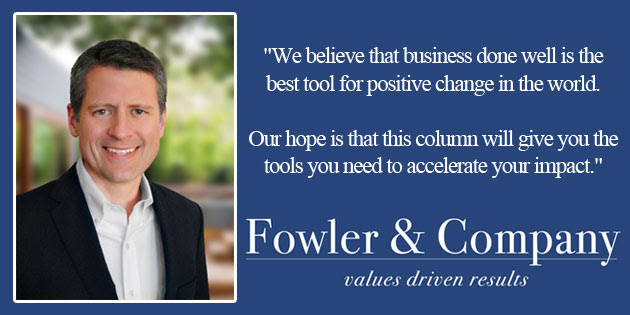VALDOSTA – Accounting is hard. It is difficult to do well and can be even harder to understand. In my roles as a Chief Financial Officer and business advisor I struggle to create numbers that give leaders the clarity they need to make great decisions. I’ve found simplicity to be the key.
Those of us who are trained in accounting love the details. We want every number to be perfect and to know all the details about what caused a financial outcome to happen. But leaders don’t need that level of detail to make great decisions.
The simplest framework I’ve come up with consists of just five numbers. Knowing these five numbers and how they are trending will give you a great overview of how your business is doing. Leaders can review these key metrics quickly and dive deeper only if they need to. Here are my “five to thrive” metrics:
Gross Profit – Revenue is vanity. Gross profit is the economic engine of your business. All the other metrics in your business should refer back to gross profit rather than revenue. Gross profit is all you have to pay your bills and return a profit to your shareholders. More revenue that delivers little gross profit does nothing but complicate your operation. Gross Profit = Revenue – Cost of Goods Sold.
Labor Efficiencies – Labor is the largest variable cost in your organization after costs of goods sold. How efficiently that labor produces gross profit is the key to bottom line results for your business. I track Direct Labor
As a leader, you must align the efforts of everyone in your organization behind a clear, compelling and inspiring vision for your organization.
You must build your vision on your competitive advantage. Warren Buffett refers to competitive advantage as “the moat that protects your company” and it is the number one factor he looks for in a company.
Today I want to help you determine what your competitive advantage is so you can build an inspiring future for your organization based on what you do best.
- Who Do You Serve Best?
Since your organization exists to meet a human need, competitive advantage must start with your customers. Who do you serve and what do they value?
A competitive advantage results in a desired outcome for your customers (speed, convenience, consistency, image, etc.). How you maintain it is internal (people, processes, investments, patents, etc.).
Your organization wins because of the outcomes created for your clients. The outcomes are why your customers buy. How you consistently deliver those outcomes is your competitive advantage.
As an example: Southwest Airlines’ customers value a low cost, low hassle and fun ride to their destination. Southwest delivers to these customers by not charging for the first two checked bags and not charging a fee to change your ticket. It is the only major airline that does not charge change fees. Every process in the Southwest organization is designed to keep costs low, hassles low and fun high.
You likely serve many different customer segments, but only one of them is your best customer. This is the customer type you serve best, they get the most value out of what you provide and you are passionate about serving them. They are or will be your most profitable customer.
Know that your best customer today may not be your best customer in the future. Watch demographic and preference trends so you can predict who your best future customer will be. What your core customer of the future values will differ from what your current best customers value. You will need to develop systems and services to serve them while you serve your current number one customer segment.
As you focus on serving your core customer group, others customer segments will still choose you because they like what you are providing. Do not let a customer segment that is not your primary customer group cause you to lose focus. Do not spend precious organizational resources where they are not most needed. Focus your resources on delivering maximum value to your core customer group. You cannot be everything to everyone.
- What Do You Do Best?
You, your team and your organization do a lot of things well, but there are just a few things you are the best at in your industry. Are you the lowest cost producer? Do you serve a specific market especially well? Is your customer service better than your competition’s?
Ask your core customers why they do business with you. Ask enough of them and you’ll begin to notice a theme. You are now getting close to your competitive advantage.
- Why Do Your Best Customers Buy From You?
Now, you have a list of the outcomes you produce that are demonstrably better than your competition and a list of what your best customers most appreciate about your products and services. What is at the top of those lists? These outcomes are most likely produced by your competitive advantages.
The outcomes – service, price, speed, etc. – are not your competitive advantage. How you produce those outcomes better than anyone else is your competitive advantage.
How Southwest prices; how it hires, trains and rewards its team members; the planes and routes it chooses; and its culture are the systems that produce the outcomes. The combination of all those systems and processes make up Southwest’s competitive advantage. The complicated web of systems all focused on delivering value to its core customers are very hard to duplicate and why Southwest has been the best performing airline for over forty years.
Double check your list by making sure you can deliver the outcomes better than anyone in your industry and that your target customers buy from you because of these outcomes.
How can you continuously improve upon your competitive advantage? You cannot maintain your competitive advantage sitting still.
Curt Fowler is President of Fowler & Company (http://valuesdrivenresults.com/) and Director at Fowler, Holley, Rambo & Stalvey (http://valdostacpa.com/). He is dedicated to helping leaders create and achieve a compelling vision for their organizations. Curt is a syndicated business writer and keynote speaker. He has an MBA in Strategy and Entrepreneurship from the Kellogg School, is a CPA, and a pretty good guy as defined by his wife and four children.
Have a business growth topic you’d like me to cover? Send suggestions to cfowler@valuesdrivenresults.com.











